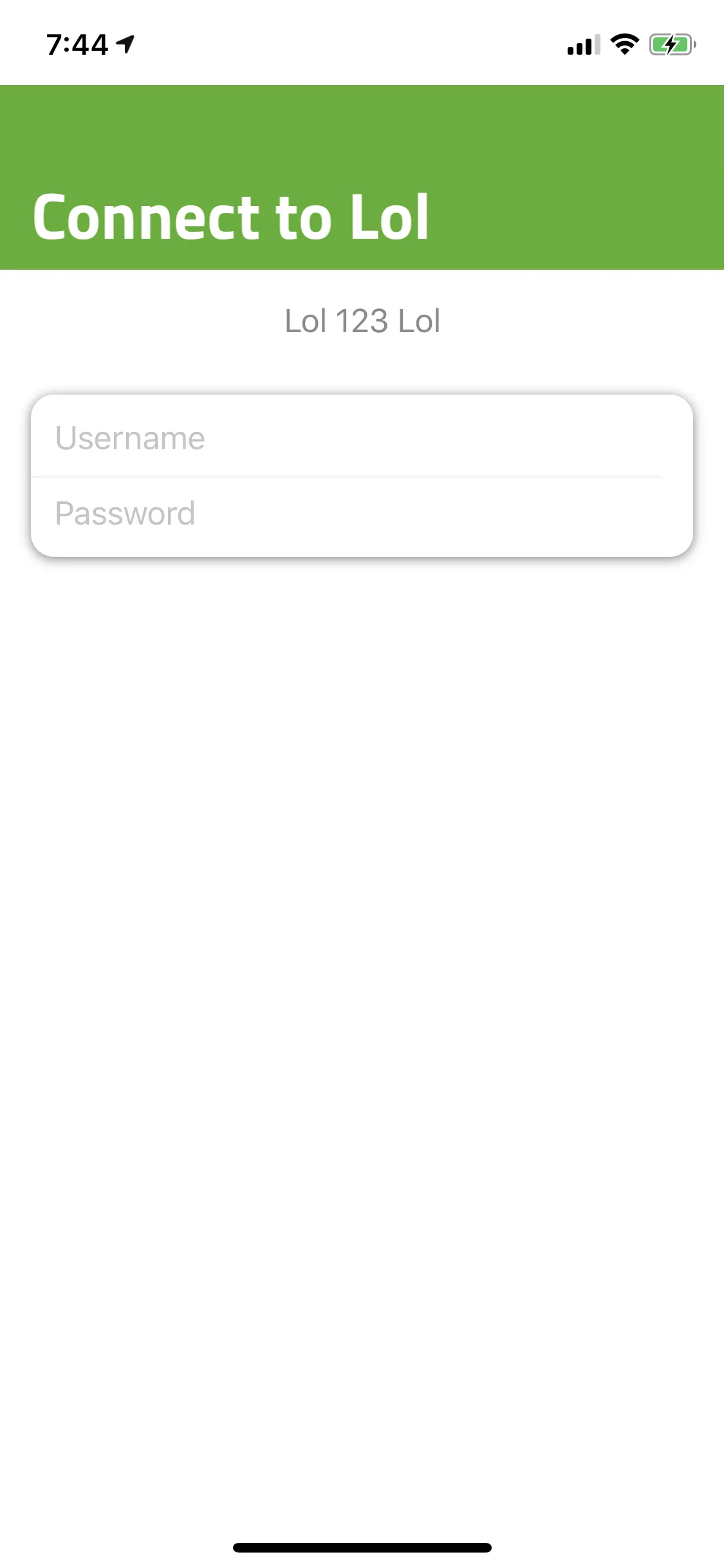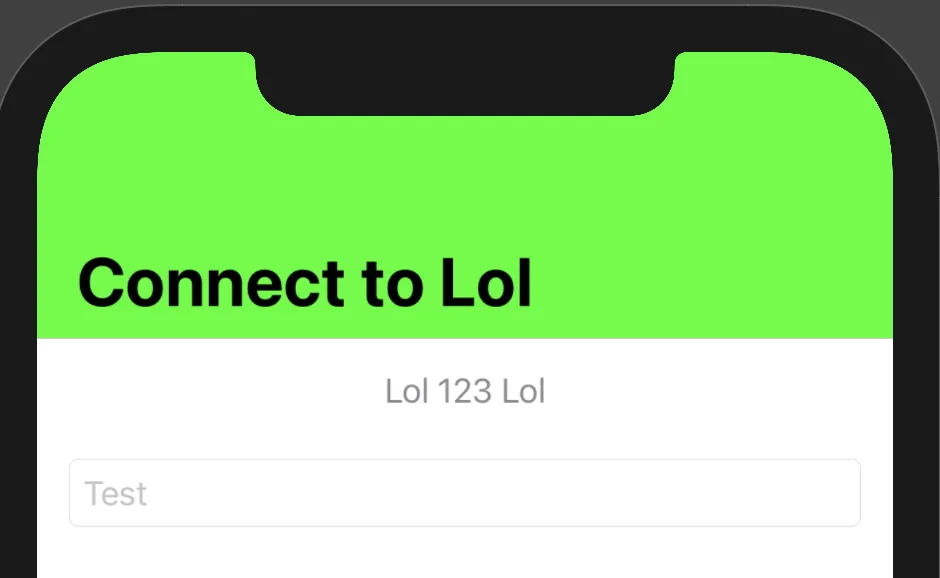我正在尝试设置状态栏的背景颜色以便使其与导航栏颜色一致。在UIKit中,我会将一个视图放在其下面。在SwiftUI中,我尝试使用
所以,这是我当前的工作状态,没有绿色的状态栏:
ZStack,但是这样会导致大标题不再起作用。所以,这是我当前的工作状态,没有绿色的状态栏:
var body: some View {
NavigationView {
ScrollView {
Text("Lol 123 Lol")
.foregroundColor(Color.secondary)
.padding([.top, .bottom], 16)
.padding([.leading,.trailing], 16)
TwoTextFieldsView(isSecondSecure: true,
firstTextFieldText: username,
secondTextFieldText: password,
firstTextFieldPlaceholder: "Username",
secondTextFieldPlaceholder: "Password")
.padding([.leading,.trailing, .bottom], 16)
}
.navigationBarTitle("Connect to Lol")
.onTapGesture {
self.hideKeyboard()
}
}
}
看起来是这样的:


.inline时才有效,但是如果我使用largeTitle,那么向上滚动和标题变小的手势就不再起作用了。 - HansDeBeer